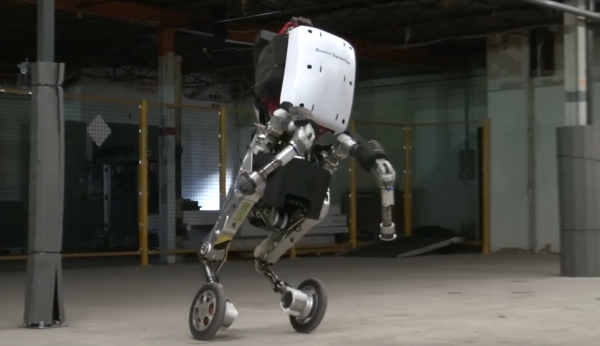Parents in Liverpool, UK, are being prepared to spot the signs that their children might be hackers. The Liverpool Echo reports on the launch of a “Hackers To Heroes” scheme targeting youngsters at risk of donning a black hat, and has an expert on hand, one [Vince Warrington], to come up with a handy cut-out-and-keep list. Because you never know when you’re going to need one, and he’s helped the Government so should know what he’s talking about.
Of course, they’re talking about “Hacker” (cybercriminal) while for us the word has much more positive connotations. And it’s yet another piece of ill-informed media scaremongering about technology that probably fits like so many others in the “People are having fun. Something Must Be Done About It!” category. But it’s still something that will probably result in hassle for a few youngsters with an interest in technology, and that’s not encouraging.
The full list is reproduced below, if you’re a parent it seems you will need to watch your children if:
- They spend most of their free time alone with their computer
- They have few real friends, but talk extensively to online friends about computers
- Teachers say the child has a keen interest in computers, almost to the exclusion of all other subjects
- They’re online so much it affects their sleeping habits
- They use the language of hacking, with terms such as ‘DdoS’ (pronounced D-dos), Dossing, pwnd, Doxing, Bots, Botnets, Cracking, Hash (refers to a type of encryption rather than cannabis), Keylogger, Lulz, Phishing, Spoof or Spoofing. Members of the Anonymous Hackivist group refer to their attacks as ‘Ops’
- They refer to themselves and their friends as hackers or script kiddies
- They have multiple social media profiles on one platform
- They have multiple email addresses
- They have an odd sounding nickname (famous ones include MafiaBoy and CyberZeist)
- Their computer has a web browser called ToR (The Onion Router) which is used to access hacking forums on the dark web
- Monitoring tools you’ve put on the computer might suddenly stop working
- They can connect to the wifi of nearby houses (especially concerning if they have no legitimate reason to have the password)
- They claim to be making money from online computer games (many hackers get started by trying to break computer games in order to exploit flaws in the game. They will then sell these ‘cheats’ online).
- They might know more than they should about parents and siblings, not being able to resist hacking your email or social media
- Your internet connection slows or goes off, as their hacker rivals try to take them down
- Some circumstantial evidence suggests children with Autism and Asperger’s could be more vulnerable to becoming hackers.
Reading the list, we can’t help wondering how many Hackaday readers would recognise as perfectly normal behaviours from their own formative years. And some of them look ripe for misinterpretation, for example your internet connection slowing down does not automatically mean that little [Jimmy] is selling a billion compromised social media accounts on the Dark Web.
Particularly concerning though is the final association of computer crime with children who are autistic or have Asperger’s Syndrome. Picking on a minority as a scapegoat for a public moral panic is reprehensible, and is not responsible journalism.
Still, you have to laugh. They remembered to include a stock photo of a hacker using a keyboard, but they’ve completely missed the telltale sign of a real hacker, which is of course wr1t1n9 11k3 r341 1337 h4xxx0rzzz.
Via The Register.
Liverpool skyline, G-Man (Public domain) via Wikimedia Commons.



















